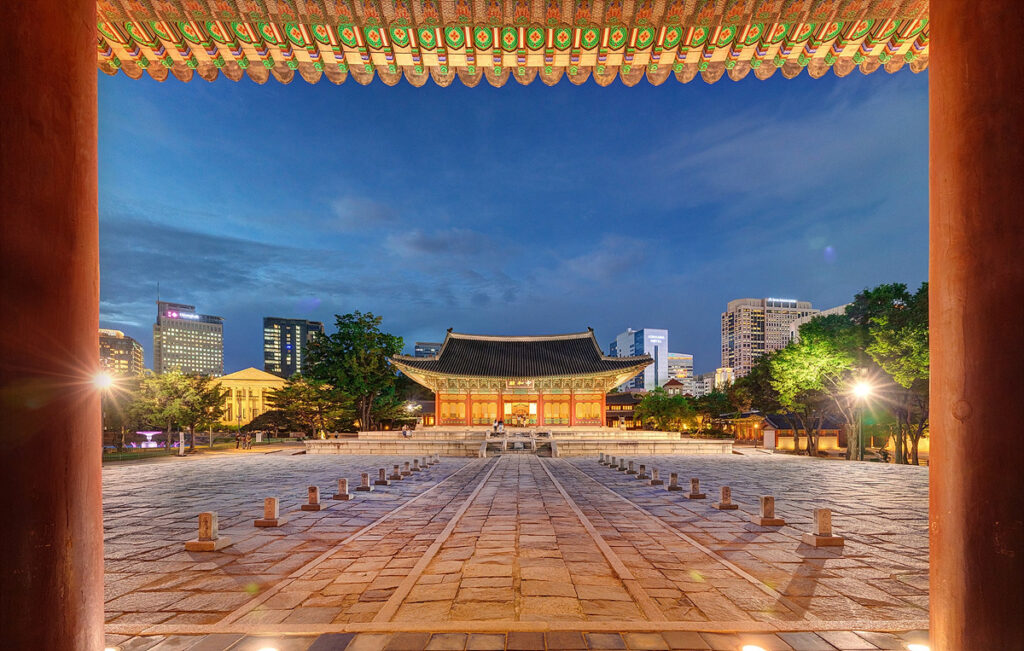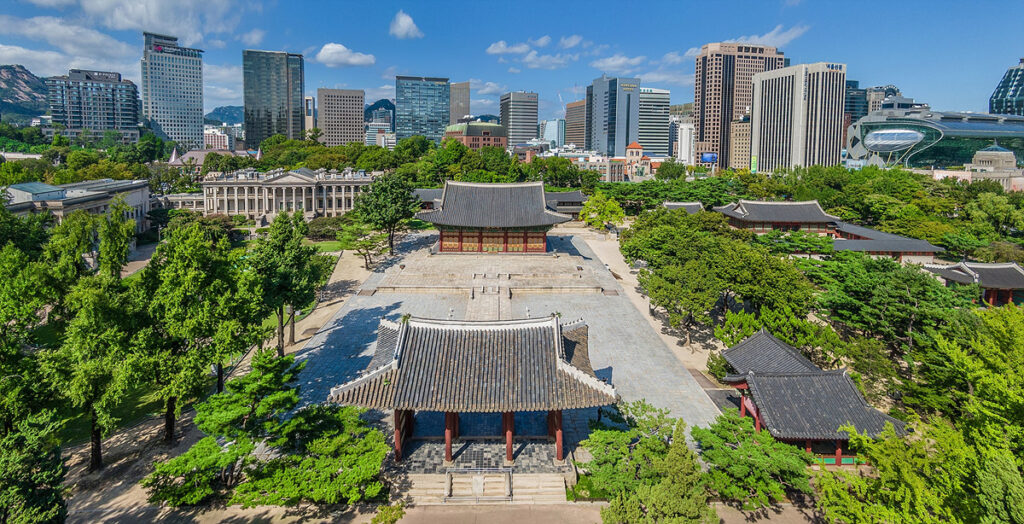Deoksugung Palace Seoul: History & Travel Guide
If you’re planning a trip to Seoul, chances are you’ve already heard of Gyeongbokgung or Changdeokgung. But right in the middle of the city, surrounded by modern skyscrapers and bustling streets, stands another gem: Deoksugung Palace. Smaller and more intimate than the other royal palaces, Deoksugung offers a unique blend of Korean tradition and Western influence, making it a must-see spot for anyone curious about Korea’s past and present.
🏯 Deoksugung Palace History in Seoul

Seokjojeon Hall
ⓒ 궁능유적본부
Deoksugung Palace dates back to the late 16th century. It became a royal residence during the turbulent years after the Japanese invasions of Korea (1592–1598). Later, in the early 20th century, King Gojong proclaimed the Korean Empire here and used Deoksugung as the center of politics and diplomacy.
Unlike other palaces in Seoul, Deoksugung is famous for its mix of traditional wooden Korean halls and Western-style stone buildings such as Seokjojeon Hall, designed in neoclassical style. This makes the palace a living symbol of Korea’s transition from tradition to modernization.
🌟 Top Things to See at Deoksugung Palace

Junghwamun Gate and Junghwajeon Hall
ⓒ 궁능유적본부
- Changing of the Royal Guard Ceremony: A colorful re-enactment held in front of Daehanmun Gate, a great photo opportunity.
- Seokjojeon Hall: A Western-style building housing exhibitions about modern Korean history.
- Junghwajeon Hall: The main throne hall where royal ceremonies were held.
- Deoksugung Stone Wall Road: A romantic walkway along the palace walls, especially beautiful in autumn and evening light.
🌿 Deoksugung Palace Visitor Information & Travel Tips

Daehanmun Gate
ⓒ 궁능유적본부
- Opening Hours: Generally 9:00 AM – 9:00 PM (closed Mondays).
- Tickets: Affordable (around 1,000–2,000 KRW); check for combo tickets if visiting multiple palaces.
- Guided Tours: English tours available at specific times—check the official website before visiting.
- Best Time to Visit: Late afternoon for golden-hour photos, or spring and autumn when the scenery is most colorful.
- Travel Tip: Wear comfortable shoes; while Deoksugung is smaller than other palaces, you’ll still want to explore its halls, gardens, and stone paths.
🧭 Attractions Near Deoksugung Palace in Seoul

Deoksugung Palace
ⓒ 궁능유적본부
One of the best things about Deoksugung is its central location. After exploring the palace, you can easily enjoy nearby attractions:
- Seoul City Hall & Seoul Plaza: Right across from the palace, this is where big cultural events and festivals often take place.
- Seoul Museum of Art (SeMA): Located just behind Deoksugung, perfect if you enjoy contemporary art.
- Bukchon Hanok Village: A short bus or subway ride away, this neighborhood is filled with traditional Korean houses (hanok), tea houses, and photo spots. It pairs beautifully with a visit to Deoksugung if you want to experience both modern and traditional Seoul in one day.
✨ Why Visit Deoksugung Palace in Korea?

Jeukjodang and Junmyeongdang Halls
ⓒ 궁능유적본부
While Gyeongbokgung might be the grandest, Deoksugung Palace feels more intimate and approachable. Its blend of wooden halls, Western-style stone buildings, and the romantic stone wall road set it apart from other palaces in Seoul. If you want to understand how Korea navigated the crossroads of tradition and modernization, Deoksugung is the perfect place to visit.
✏️ Final Note
Deoksugung Palace isn’t just another historic site—it’s where Korea’s history and Seoul’s urban heartbeat meet. For travelers, it’s a compact yet meaningful stop that fits easily into any Seoul itinerary, especially if you combine it with nearby attractions like Bukchon Hanok Village or Seoul Museum of Art.